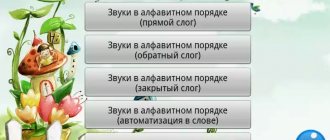Main aspects of the application of professional standards
The procedure for the development and application of professional standards is determined by the following acts:
- Adopted in 2015, 122-FZ, which lists the main provisions for their use.
- Articles 195.2 and 195.3 were introduced into the Labor Code on the basis of this Federal Law, which established the mandatory use of professional standards for professions whose qualification parameters are given in the current legislation.
- Government Resolution No. 584 adopted in 2016, which states that professional standards are mandatory for budgetary institutions, as well as organizations that are 50% or more controlled by the state.
As can be seen, in the private sector, the application of professional standards occurs on a voluntary basis. In the business sphere they are used for:
- Documenting qualification parameters (education, work experience, specialized and general skills). This allows not only to correctly screen out applicants with inappropriate qualifications, but also to require employees to undergo additional training.
- Changes in the organizational structure, which are carried out by renaming positions, changes in staffing, and eliminating non-core responsibilities.
- Resolving disputes with representatives of regulatory authorities (Federal Tax Service, Rostrud, etc.) during their inspections of documentation.
- Introducing current changes to the organization’s documents regulating personnel relations: job descriptions, employment contracts, etc.
Attention! So far, in the field of personnel relations, all-Russian directories of professions (EKS and ETKS) remain relevant. In the future, it is planned to integrate them into a unified system of labor documentation, but for now the employer can use them along with professional standards.
Key points in drawing up instructions
The domestic regulatory framework does not specify the parameters for creating instructions. Therefore, when writing it, employers focus on adapting standard instructions for their needs, in accordance with the principles of office work. These samples are available in two versions: standard and extended.
Mandatory parts of the standard instructions:
- Common parameters.
- Professional features.
- Potential Liability.
- Job opportunities.
This type of instruction is used for most workers, especially in small and medium-sized organizations. In large institutions, as well as when writing instructions for management-level employees, an extended version is used. It adds to the standard sections:
- Features of work activity.
- Rules for performance assessment (KPI).
- Parameters of job interactions.
- Instruction conversion order.
The expanded format allows you to formalize a larger number of labor parameters. The price for this is a reduction in the flexibility of labor relations.
Basic provisions
The introductory part lists the requirements for the candidate’s qualifications, the parameters of his personnel interactions (the procedure for hiring, dismissal, replacement), and the provisions that he should focus on in his work.
The main role is played by the required skills, which are required to ensure that the functions given in the next section are performed at a high level. And criteria based on experience and education make it possible to screen out candidates with an insufficient level of training.
Attention! Job descriptions can be drawn up either in a standard manner or individually. In the first case, the instructions are suitable for any specialist in a certain position, and in the second, they are written for a specific highly qualified worker.
Functions
This part describes the responsibilities assigned to the specialist. There are several conditional groups of these responsibilities:
- The main ones are typical for the profession of any employer.
- Auxiliary - complement the main functions; their scope and complexity depend on the policies and characteristics of the employing organization.
- Basic - included in instructions for any profession: compliance with fire and technical safety standards, labor discipline, etc.
If an employer provides an employee with any valuables (tools, clothes for work, etc.), then the need to treat them with care is specifically mentioned.
Responsibility
This part is reserved for listing possible violations and penalties. Since responsibility is built on the basis of current legislation, the scope and diversity of which take it beyond the scope of the instructions, the section is compiled in a truncated form, with a small amount of specifics.
Rights
The section describes rights additional to those already granted to the employee in Art. 21 TK. As a general rule, the greater the responsibility of an employee, the greater the opportunities he has.
Working conditions
This section is added if the employer wants to identify some specific features in work activity. Traditionally, this includes additional benefits: training at the expense of the employer, free branded clothing, etc. If the work involves a non-standard work schedule, then this point is stated in this section.
Before being put into effect, the instruction must go through a number of approval stages:
- The initially drafted version is shown to a lawyer specializing in labor law and the head of the personnel department.
- The version with their edits is agreed upon with relevant specialists in the area for which the instructions are being drawn up.
- The final version is printed on company letterhead, including official attributes (date of compilation, details of the organization, etc.), and sent for signature to those persons who approved its content.
- At the final stage, signatures are placed by the head of the employing organization and the employee for whom the instructions were written.
Attention! The employee has the right to request from the HR department his copy of the instruction, which can be issued in paper or electronic format. In the second option, personal information is first deleted from it.
Application of the professional standard in practice
The introduction of professional standards into office work practice is based on a certain algorithm:
- Studying the industry characteristics of the employer’s activities using OKVED codes.
- Analysis of available positions and the range of responsibilities performed by current specialists. This analysis is based on the staffing table, job descriptions and other personnel documentation.
- Studying existing professional standards that suit the profile of the organization and its employees.
- Changing labor documentation based on the provisions of the found professional standards, as well as relevant sections of the EKS and ETKS.
- Carrying out the necessary changes in the organizational structure of the organization (redistribution of responsibilities, introduction of new positions, etc.).
After completing a set of these measures, based on the changes made, the employer receives the opportunity to:
- Present qualified requirements to candidates for positions.
- Oblige existing employees to improve their professional level to acquire the necessary skills and abilities.
- Offer low-skilled employees to move to less significant positions using Article 72.1 of the Labor Code of the Russian Federation.
Attention! If the organization employs many employees in various positions, then it is recommended that the implementation of professional standards be carried out on the basis of regulations that establish responsible persons, the procedure for implementation, deadlines and other parameters.
Teacher documentation - speech therapy material on speech therapy
SPEECH CARD.
1. Last name, first name of the child_________________________________ 2. Age _______________
3. Date of enrollment in Art. group ____________________
4. Last name, first name, patronymic of parents
Mother_____________________________________________________________________________
Father_____________________________________________________________________________
5. Brief anamnestic data:
How was the pregnancy and childbirth?_____________________________________________
When did you scream?__________________________________________ How did physical development proceed:
began to hold his head ________________________________ sit _________________________
get up__________________________________________ walk_________________________
What diseases have you suffered over the years?________________________________________________________________
Speech development of a child: humming__________________ babbling __________________________ first words _____________________________________ speech in phrases _____________________
Was speech development interrupted (if interrupted, for what reason, how long did it last, with what consequences) ___________________________________________________
_________________________________________________________________________________
How quickly did you increase your vocabulary? ___________________________________________
6. Hearing_________________7. Vision ___________________8. Intelligence ________________
9. Speech environment and social conditions: ___________________________________________
Have you contacted a speech therapist before? How long did the classes last? ___________________________
_________________________________________________________________________________their effectiveness________________________________________________________________
How does the child himself feel about the speech defect? _______________________________________
10. General sound of speech: tempo _______________________ voice _______________________
intelligibility__________________________________________ breathing _______________________
11. Examination of the articulatory apparatus:
Tongue mobility_______________________________bite___________________________
structure of the palate ___________________________________ teeth ___________________________________
condition of the hyoid frenulum _________________________ lips _______________________
12. State of general and fine motor skills (coordination of movements, state of fine motor skills, which hand the child prefers to work with)_________________________________
_________________________________________________________________________________
13. General development of the child:
a) forward counting ____________________________________ reverse counting _______________________
counting operations: _________________________________________________________________
b) highlighting the fourth extra ___________________________________________________
14. Examination of speech understanding:
a) following instructions_______________ b) understanding the meaning of prepositions______________
c) understanding number ___________________ gender _________________ case ________________
15. Sound pronunciation.
Vowels: A ____________ U ____________ O ____________ Y ____________ E ____________
Consonants: S ___________ S' __________ Z _____________ Z' ____________ C ___________
W __________________ F ________________ Sh ___________________ H _________________
L _______________ L _____________ R _____________ R R _____________ Y ______________
Repeat the sentences:
The catfish has a mustache. ________________________________________________________________________
Zoya is drying her fur coat. ___________________________________________________________________
Zina has a yellow umbrella. ____________________________________________________________
Girls and boys jump like bunnies._______________________________________________
I clean the puppy with a brush, tickle its sides.________________________________________________
_________________________________________________________________________________
Lyuba has toothache.________________________________________________________________
There is a squirrel on the oak tree.______________________________________________________________________________
Five kittens are hungry.______________________________________________________________
Maya and Yulia sing._________________________________________________________________
The clown had a balalaika.__________________________________________________________
The cow has sharp horns._______________________________________________________________
16. Phonemic perception ___________________________________________________
a) isolating a sound from a number of sounds: ___________________________________________________
“t” - m, p, t, k, d, t, n, k, p, t________________ “p” - ta, ma, pa, ta, ka, yes, ta _________________
“k” - poppy, spider, there, house, cat, mole _________________________
b) repetition of a series of syllables and words: ___________________________________________________
ta-da-ta ____________________________ da-ta-ta ___________________________
ka-ha-ha ____________________________ ga-ha-ka ___________________________
pa-ba-pa___________________________ ba-ba-pa___________________________
cat-year-cat_______________________________________ tom-com-gnome _____________________________
tom-house-com___________________________ pop-buck-tock ______________________________
c) differentiation of sounds:__________________________________________________________
S – W _______________________ F – W __________________ S – S _____________________
S – W______________________ H – T __________________ L – R _______________________
W – F______________________ C – S _________________ H – C _______________________
C – T _____________________ P – S _________________ P – B _______________________
T – D ______________________ K – X ___________________ K – G _______________________
17. Analysis of the sound composition of a word_________________________________________________
a) highlighting the first sound in a word: ___________________________________________________
Alik ___________________ duck _______________________ city ______________________
Olya ____________________ echo _________________________ wolf _______________________
Ira ____________________ windows ___________________________ bank ______________________
b) highlighting the last sound in a word: ________________________________________________
fluff ________________ moon ______________ cat _______________ balls _________________
juice ________________ flour ______________ hands ______________ nose ___________________
18. Pronunciation of words with complex syllabic composition: _________________________________
aquarium ______________________________ fruits ___________________________________
policeman ________________________________ bicycle ________________________________
construction __________________________ cyclist _____________________________
An astronaut controls a spaceship._____________________________________________ Sasha liked the plastic boat._______________________________________________ A motorcyclist rides a motorcycle.______________________________________________________________
A hare and her babies drink tea with cookies. _______________________________________________
19. State of the dictionary______________________________________________________________
1. Subject dictionary: ____________________________________________________________
a) explanation of the meaning of words:
fridge _____________________________________________________________________
vacuum cleaner _________________________________________________________________________
b) showing and naming parts of objects:
Kettle: bottom __________________________ Chair: seat ________________________
spout _____________________________ back ________________________
cover ___________________________ legs _________________________
pen _____________________________
c) level of generalization:
Sweater, dress, shorts, skirt, tights _______________________________________________
Boots, shoes, slippers, felt boots _____________________________________________________
Saucer, frying pan, spoon, plate___________________________________________
Tomato, turnip, carrot, cabbage _____________________________________________________
Apple, peach, pear, lemon _______________________________________________________
Cat, dog, wolf, hedgehog ____________________________________________________________
Dove, duck, sparrow, crow _______________________________________________________
Wardrobe, table, chair, bedside table _______________________________________________________
Bus, train, tram, plane _______________________________________________
d) Name which ones you know?
- vegetables_____________________________________________________________________
- fruits ____________________________________________________________________
- cloth ____________________________________________________________________
- shoes ______________________________________________________________________
- furniture _____________________________________________________________________
- Seasons _______________________________________________________________
- months _____________________________________________________________________
- transport __________________________________________________________________
- wild animals _____________________________________________________________
- Pets _________________________________________________________
- birds _____________________________________________________________________
- flowers______________________________________________________________________
- trees ____________________________________________________________________
- mushrooms _____________________________________________________________________
- berries _____________________________________________________________________
- professions _________________________________________________________________
2. Dictionary of signs: ________________________________________________________________
a) selection of adjectives for nouns: ________________________________________________
lemon - which one? __________________________________________________________________
what kind of dress? ___________________________________________________________________
fox - which one? _____________________________________________________________________
b) selection of antonyms
wide ____________________ long _________________ high ___________________
cheerful _____________________ bright _________________ sick ___________________
straight _____________________ dry ____________________ cold _________________
c) formation of adjectives from nouns:
Plastic handle ___________________________ Leather bag _________________________
Matryoshka made of wood ______________________________ Glass glass _______________________
Cranberry juice _____________________________ Fur coat __________________________
d) formation of possessive adjectives: _____________________________________________
Whose tail? _____________________________ Whose head? _____________________________
3. Verb dictionary: _________________________________________________________________
a) What does it do?
cook __________________ teacher _____________________ doctor _________________
postman ______________________________________________
b) Who gives what voice?
cat _______________________ dog ____________ goose ______________________
duck __________________________ rooster ___________________ mouse _____________________
cow _______________________ frog _________________ pig ____________________
20. Examination of the grammatical structure of speech: _____________________________________
a) formation of the plural of nouns and the genitive case of plural nouns:
| plural of im.pad. | plural of birth.pad. | |
| chair | ||
| bucket | ||
| sparrow | ||
| house | ||
| bee | ||
| ear | ||
| duckling | ||
| window |
b) formation of a diminutive form:
house______________________ Christmas tree ______________________ Zhenya _______________________
chair____________________ mushroom _______________________ Kostya ______________________
c) agreement of nouns with numerals:
| — 1 — ear | — 2 — | — 5 — |
| tomato | ||
| chair | ||
| pen |
e) Who has whose cub?
in a cat __________________ in a dog __________________ in a pig ___________________
for a bear ___________________ for a hare ___________________ for a fox_____________________
in a cow ___________________ in a horse __________________ in a sheep_____________________
in a mouse ____________________ in a frog _________________ in a chicken __________________
f) prepositional-case forms: _____________________________________________________
21. Examination of coherent speech:__________________________________________________________
a) compiling a story based on the picture________________________________________________________________
_________________________________________________________________________________
_________________________________________________________________________________
_________________________________________________________________________________
b) compiling a story based on a series of paintings _____________________________________________
_________________________________________________________________________________
_________________________________________________________________________________
_________________________________________________________________________________
_________________________________________________________________________________
22. Speech therapy conclusion: ___________________________________________________
_________________________________________________________________________________
__________________________________________________________________________________________________________________________________________________________________
"____" _____________________ 20__
Speech therapist teacher at Burmakinskaya Secondary School No. 2 (kindergarten groups)/____________________/



